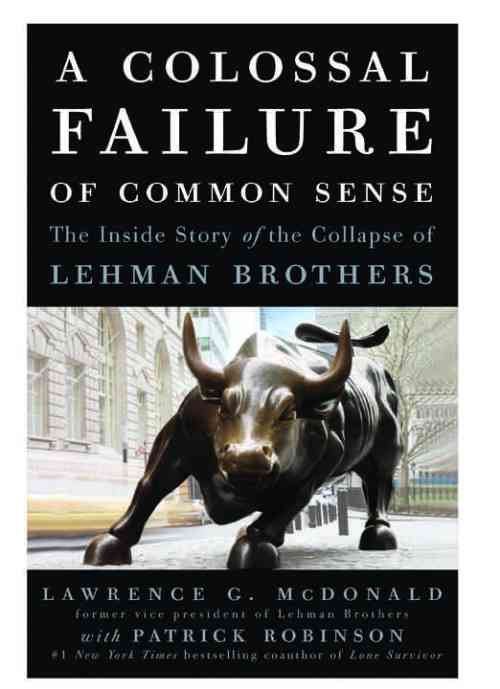By George Soros
Published by Financial Times
In the past, whenever the financial system came close to a breakdown, the authorities rode to the rescue and prevented it from going over the brink. That is what I expected in 2008 but that is not what happened. On Monday September 15, Lehman Brothers, the US investment bank, was allowed to go into bankruptcy without proper preparation. It was a game-changing event with catastrophic consequences.
For a start, the price of credit default swaps, a form of insurance against companies defaulting on debt, went through the roof as investors took cover. AIG, the insurance giant, was carrying a large short position in CDS and faced imminent default. By the next day Hank Paulson, then US Treasury secretary, had to reverse himself and come to the rescue of AIG.
But worse was to come. Lehman was one of the main market-makers in commercial paper and a large issuer of these short-term obligations to boot. Reserve Primary, an independent money market fund, held Lehman paper and, since it had no deep pocket to turn to, it had to “break the buck” – stop redeeming its shares at par. That caused panic among depositors: by Thursday a run on money market funds was in full swing.
The panic then spread to the stock market. The financial system suffered cardiac arrest and had to be put on artificial life support.
How could Lehman have been left to go under? The responsibility lies squarely with the financial authorities, notably the Treasury and the Federal Reserve. The claim that they lacked the necessary legal powers is a lame excuse. In an emergency they could and should have done whatever was necessary to prevent the system from collapsing. That is what they have done on other occasions. The fact is, they allowed it to happen.
On a deeper level, too, credit default swaps played a critical role in Lehman’s demise. My explanation is controversial and all three steps of my argument will take the reader to unfamiliar ground.
First, there is an asymmetry in the risk/reward ratio between being long or short in the stock market. (Being long means owning a stock, being short means selling a stock one does not own.) Being long has unlimited potential on the upside but limited exposure on the downside. Being short is the reverse. The asymmetry manifests itself in the following way: losing on a long position reduces one’s risk exposure while losing on a short position increases it. As a result, one can be more patient being long and wrong than being short and wrong. The asymmetry serves to discourage the short-selling of stocks.
The second step is to understand credit default swaps and to recognise that the CDS market offers a convenient way of shorting bonds. In that market the asymmetry in risk/reward works in the opposite way to stocks. Going short on bonds by buying a CDS contract carries limited risk but unlimited profit potential; by contrast, selling credit default swaps offers limited profits but practically unlimited risks.
The asymmetry encourages speculating on the short side, which in turn exerts a downward pressure on the underlying bonds. When an adverse development is expected, the negative effect can become overwhelming because CDS tend to be priced as warrants, not as options: people buy them not because they expect an eventual default but because they expect the CDS to appreciate during the lifetime of the contract.
No arbitrage can correct the mispricing. That can be clearly seen in US and UK government bonds, whose actual price is much higher than that implied by CDS. These asymmetries are difficult to reconcile with the efficient market hypothesis, the notion that securities prices accurately reflect all known information.
The third step is to recognise reflexivity – that is to say, the mispricing of financial instruments can affect the fundamentals that market prices are supposed to reflect. Nowhere is this phenomenon more pronounced than in the case of financial institutions, whose ability to do business is dependent on confidence and trust. That means that “bear raids” to drive down the share prices of these institutions can be self-validating. That is in direct contradiction to the efficient market hypothesis.
Putting these three considerations together leads to the conclusion that Lehman, AIG and other financial institutions were destroyed by bear raids in which the shorting of stocks and buying of CDS amplified and reinforced each other. Unlimited shorting was made possible by the 2007 abolition of the uptick rule (which hindered bear raids by allowing short-selling only when prices were rising). The unlimited selling of bonds was facilitated by the CDS market. Together, the two made a lethal combination.
That is what AIG, one of the most successful insurance companies in the world, failed to understand. Its business was selling insurance and, when it saw a seriously mispriced risk, it went to town insuring it, in the belief that diversifying risk reduces it. It expected to make a fortune in the long run but it was destroyed in short order.
My argument raises some interesting questions. What would have happened if the uptick rule on shorting shares had been kept, in effect, but “naked” short-selling (where the vendor has not borrowed the stock in advance) and speculating in CDS had both been outlawed? The bankruptcy of Lehman might have been avoided but what would have happened to the asset super-bubble? One can only conjecture. My guess is that the bubble would have been deflated more slowly, with less catastrophic results, but that the after-effects would have lingered longer. It would have resembled more the Japanese experience than what is happening now.
What is the proper role of shortselling? Undoubtedly it gives markets greater depth and continuity, making them more resilient, but it is not without dangers. As bear raids can be self-validating, they ought to be kept under control. If the efficient market hypothesis were valid, there would be an a priori reason for imposing no constraints. As it is, both the uptick rule and allowing short-selling only when it is covered by borrowed stock are useful pragmatic measures that seem to work well without any clear-cut theoretical justification.
What about credit default swaps? Here I take a more radical view than most people. The prevailing view is that they ought to be traded on regulated exchanges. I believe they are toxic and should be used only by prescription. They could be used to insure actual bonds but – in light of their asymmetric character – not to speculate against countries or companies.
CDS are not, however, the only synthetic financial instruments that have proved toxic. The same applies to the slicing and dicing of collateralised debt obligations and to the portfolio insurance contracts that caused the stock market crash of 1987, to mention only two that have done a lot of damage. The issuance of stock is closely regulated by authorities such as the Securities and Exchange Commission; why not the issuance of derivatives and other synthetic instruments? The role of reflexivity and the asymmetries identified earlier ought to prompt a rejection of the efficient market hypothesis and a thorough reconsideration of the regulatory regime.
Now that the bankruptcy of Lehman has had the same shock effect on the behaviour of consumers and businesses as the bank failures of the 1930s, the problems facing the administration of President Barack Obama are even greater than those that confronted Franklin D. Roosevelt. Total credit outstanding was 160 per cent of gross domestic product in 1929 and rose to 260 per cent in 1932; we entered the crash of 2008 at 365 per cent and the ratio is bound to rise to 500 per cent. This is without taking into account the pervasive use of derivatives, which was absent in the 1930s but immensely complicates the current situation. On the positive side, we have the experience of the 1930s and the prescriptions of John Maynard Keynes to draw on.
The bursting of bubbles causes credit contraction, the forced liquidation of assets, deflation and wealth destruction that may reach catastrophic proportions. In a deflationary environment, the weight of accumulated debt can sink the banking system and push the economy into depression. That is what needs to be prevented at all costs.
It can be done – by creating money to offset the contraction of credit, recapitalising the banking system and writing off or down the accumulated debt in an orderly manner. They require radical and unorthodox policy measures. For best results, the three processes should be combined.
If these measures were successful and credit started to expand, deflationary pressures would be replaced by the spectre of inflation and the authorities would have to drain the excess money supply from the economy almost as fast as they had pumped it in. There is no way to escape from a far-fromequilibrium situation – global deflation and depression – except by first inducing its opposite and then reducing it.
To prevent the US economy from sliding into a depression, Mr Obama must implement a radical and comprehensive set of policies. Alongside the welladvanced fiscal stimulus package, these should include a system-wide and compulsory recapitalisation of the banking system and a thorough overhaul of the mortgage system – reducing the cost of mortgages and foreclosures.
Energy policy could also play an important role in counteracting both depression and deflation. The American consumer can no longer act as the motor of the global economy. Alternative energy and developments that produce energy savings could serve as a new motor, but only if the price of conventional fuels is kept high enough to justify investing in those activities. That would involve putting a floor under the price of fossil fuels by imposing a price on carbon emissions and import duties on oil to keep the domestic price above, say, $70 per barrel.
Finally, the international financial system must be reformed. Far from providing a level playing field, the current system favours the countries in control of the international financial institutions, notably the US, to the detriment of nations at the periphery. The periphery countries have been subject to the market discipline dictated by the Washington consensus but the US was exempt from it.
How unfair the system is has been revealed by a crisis that originated in the US yet is doing more damage to the periphery. Assistance is needed to protect the financial systems of periphery countries, including trade finance, something that will require large contingency funds available at little notice for brief periods of time. Periphery governments will also need long-term financing to enable them to engage in counter-cyclical fiscal policies.
In addition, banking regulations need to be internationally co-ordinated. Market regulations should be global as well. National governments also need to co-ordinate their macroeconomic policies in order to avoid wide currency swings and other disruption.
This is a condensed, almost shorthand account of what needs to be done to turn the global economy around. It should give a sense of how difficult a task it is.


Latest Comments